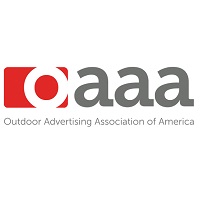Billboard Trade Association Statement on Supreme Court Rejection of Scenic America Appeal

 October 16, 2017 (Washington, DC) — The US Supreme Court today denied Scenic America’s appeal of its failed legal attack on digital billboards, ending a four-year legal battle.
October 16, 2017 (Washington, DC) — The US Supreme Court today denied Scenic America’s appeal of its failed legal attack on digital billboards, ending a four-year legal battle.
“A decade ago, a federal agency responded to questions from States – which is routine — about a new technology known as digital billboards. The courts concluded that federal guidance to the States was appropriate,” said Nancy Fletcher, president and CEO of the Outdoor Advertising Association of America (OAAA).
In 2007, the Federal Highway Administration (FHWA) released a four-page guidance memo to states seeking advice on how to regulate digital billboards. It suggested display durations of four to 10 seconds and urged avoidance of glare. Digital billboards typically display static messages for six or eight seconds in rotation.
Anti-billboard group Scenic America sued the Federal Highway Administration in 2013, and its parent agency US Department of Transportation. The lawsuit, in federal court, claimed the federal agency violated procedure because its guidance was actually a de facto rule that warranted public comment and that digital billboards violate federal law because of their modern lighting.
US District Court Judge James E. Boasberg dismissed the case in 2014, with prejudice. Scenic America appealed.
A three-judge panel of the US Circuit Court of Appeals for the District of Columbia heard the case in 2015. The appeals court rejected the plaintiff’s case. On October 16, the US Supreme Court denied Scenic America’s petition to take the case (writ of certiorari). Justice Gorsuch, joined by Chief Justice Roberts and Justice Alito, expressed interest in the issue of agency deference (the Chevron case), but said, “the proper course is to the deny certiorari.”
Nationwide, there are 7,300 digital billboards, according to a mid-year survey conducted by OAAA.
A variety of government agencies use digital billboards to help locate missing children (AMBER Alerts), find fugitives, and deliver emergency information.
“Week after week, the industry works with the government to communicate with the public on digital billboards on behalf of safety and other important shared goals,” said Fletcher of OAAA.
In the court case, the federal transportation agency was represented by the Department of Justice. The OAAA, which intervened on behalf of the industry, was represented by Williams & Connolly. Scenic America was represented by the Institute for Public Representation at Georgetown University Law Center.
OAAA is the national trade association for the out of home (OOH) advertising industry. Founded in 1891, the association represents more than 90 percent of the US OOH industry based on revenues. OAAA is dedicated to leading and uniting a responsible OOH industry committed to serving advertisers, consumers, and communities. The OOH industry generates $7.6 billion annually in ad revenues and donates more than $500 million in space each year. For more information, please visit www.oaaa.org.






